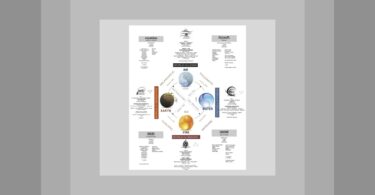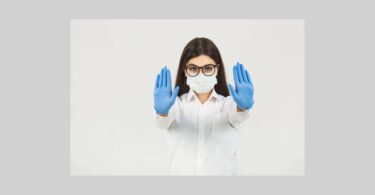Medicinal identification
The problem of correctly identifying the source of a medicine as obscure as Curare or Ignatia may seem to be one of identifying rare and inexactly described species – and therefore peripheral to good homeopathic practice. But it raises questions bearing on the accuracy of all homeopathic prescriptions.
The homeopathic community has two meanings for the term homeopathic medicine. One arises in the context of treatment of the individual patient: it is the substance – however prepared through “homeopathic” manufacture – that is homeopathic to that patient.
The other meaning concerns the process of manufacture, and refers to the original medicine’s serial dynamisation cycle of dilution and succussion to produce a “homeopathic” potency.
Such a potency may clearly contain molecules of the original medicine (i.e., remain in the inframolecular range) or may equally clearly have a low probability of containing any of those original molecules (i.e., be in the ultramolecular range).
It is, if course, this second meaning, the process of manufacture, that critics of homeopathy invariably rejoice in discovering and criticising once their mathematics is up to the task of working out that it is possible to manufacture into the ultramolecular range.
The importance of medicinal invariability and provenance
Although the manufacture of ultramolecular potencies is not essential to homeopathic practice, its accuracy is relevant to the practitioner concerned with the sharpness of her tools.
When a practitioner refers, in relation to no particular patient, to a “homeopathic” medicine, she is referring to a product of a process that begins with the collection or chemical synthesis of a medicinal substance and ends with its bottling in alcohol, usually via a number of dynamisation steps, either through dilution and succussion in aqueous alcohol or through trituration with lactose.
(For the sake of convenience, I’ll refer from here on merely to the process entailing liquid dilution, but preparation through trituration is subject to exactly the same considerations.)
What a practitioner means, then, by a “homeopathic” medicine is an aqueous solution, possibly nothing more than water and alcohol, that has a certain history.
The history of that solution may be apparent in a very rough sense through the solution’s biological effects and through the physical properties it manifests under, for instance, gas chromatography or nuclear magnetic resonance. But for the most part, and certainly in the detail, the provenance of any ultradilute homeopathic medicine is at present a matter of implicit trust by dispensing pharmacist and practitioner in the integrity of the homeopathic chemist. Pharmacist and practitioner alike count on the chemist to take whatever steps are necessary to ensure that the new preparation matche as exactly as humanly possible the original preparations.
Variability in starting material
Take, for example, any potency of Tarentula cubensis. There cannot be more than one source of that remedy: the original material scooped up from the deck of a particular ship sailing home from Cuba. No attempt to duplicate the conditions of its origin can hope to succeed in doing so, and all homeopathic chemists of any integrity must ultimately derive their preparations of Tarent.-cub. from the same single source.
So much is obvious. But, to a greater or lesser extent, most homeopathic medicines of biological rather than of mineral or synthetic origin, and even some of the latter, are subject to the same considerations of uncontrollable variability in starting material that dooms any attempt to duplicate Tarentula cubensis.
Chemical variability
In the preparation of allopathic medicines, such variability may be overcome by the carefully controlled extraction of a single chemical from the source, even if such precision is ignored once the medicine has been approved for use – and becomes ancient history once the medicine has multiple manufacturers. But in homeopathy, the medicinal effects of the product reflect the medicinal effects of the source; and the exactness of prescribing indications reflects the particularity of effects of the substance that originally underwent pathogenetic trials (“provings”).
In homeopathic manufacture, therefore, chemical variability in the source is far more critical to effectiveness than it is in allopathic manufacture.
In the case of medicines of biological origin, the medicine is usually not a single chemical as it ideally would be in allopathy, but a naturally occurring mixture of chemicals – the mixture that the relevant source organism’s biology dictates, justifying Hahnemann’s classification of it as a single, simple substance.
But two organisms of the same species have different life histories and slightly different functional and anatomical totalities. It has been known for many decades that collectors of, say, Pulsatilla nigricans from two different kinds of soil will collect organisms having two different balances in chemical composition. Each is, in Hahnemann’s terms, a single, simple substance, and each is Pulsatilla nigricans; yet, due to variations in chemical composition, the symptom totality of one is likely to differ, in some respects, from the symptom totality of the other.
The dictates of provenance
Such considerations dictate that a certain biological source should at minimum be obtained in circumstances similar to those of the original source. But they suggest also that, for reliability in symptom similarity, certain medicines – and perhaps all medicines of biological origin – should be prepared only from the original source, the one used in pathogenetic trials. Tarentula cubensis is merely the most obvious example, the tip of the iceberg that is the problem of identity of homeopathic medicines.
Homeopathy, then, faces a uniquely critical problem in medicinal identity. How fortunate, then, that it has a uniquely available solution.
Homeopathic medicinal preparation cannot solve the problem of medicinal identity, even in the mineral and synthetic realms, by the allopathic approach of purification of a single chemical to a certain standard of purity. The allopathic “indications” for a medicine capable of opposing a biological process (an enantiopathic medicine) are far less particular than are the homeopathic “indications” for a medicine capable of mimicking it.
Some variability in the manufacture of an allopathic drug, although it may ultimately prove highly dangerous, usually does not affect the drug’s effectiveness; but slight variation in the original substance used in manufacturing a “homeopathic” potency – although it will have no influence on safety – may render the medicine quite useless for highly accurate, individualised homeopathic prescription.
Moreover, medicines prescribed homeopathically are prescribed always and only on the basis of their pathogenetic trials, and those trials rely inherently on the medicine’s origin in a single integrated source, such as a plant. Any mixed source, such as spring waters or a mixture of milk samples, will result in unpredictable and uncontrollable chemical and symptomatic variation and chemical and dynamic synergies and antagonies and for that reason will never be more than a marginal medicine in homeopathy.
By and large, homeopathic medicines come from biological sources, and do not comprise a single chemical. They therefore cannot be chemically purified as allopathic ones to a certain extent can. Again, though they comprise mixtures of compounds and elements, their origin in an integrated single organism appears to confer on them a symptomatic stability that Hahnemann recognised in the term “single, simple substance”. The existence of mixtures in a single organism does not appear to be a problem in that regard. But the complex variations between two organisms of the same species poses a great challenge to consistency and accuracy in prescribing.
In the case of medicines subject to chemical variability due to geographic location, climatic conditions, pollution, or uncertainty in species identification, there is only one way for the chemist to match as exactly as humanly possible the original preparation used in pathogenetic trials: to prepare the potency from the original source rather than from a very similar source. And that reminds us again of the importance of provenance.
Biological variability demands prescription accuracy
Provenance is an irrelevancy in the preparation of allopathic medicines. Such preparation by and large uses chemistry to control medicinal content to the degree of precision deemed financially worthwhile for enantiopathic ends. A certain purity in the sought end product and a limit on known dangerous contaminants are virtually all that manufacturer, practitioner, and regulator require. Exactness of reproduction from one batch to another is not critical to reproducible effectiveness in subduing a particular biological process.
But homeopathic medicines commonly depend upon provenance absolutely for the exactness of their match with the medicine that, under the same name, underwent pathogenetic trials. The exactness of that match is critical in homeopathy as it is not in allopathy, because, rather than subdue a biological process, homeopathy inherently seeks to mimic as comprehensively and closely as possible the entire relevant set of biological processes – those resulting in the patient’s foremost set of symptoms.
Low absolute dose demands prescription accuracy
Homeopathy’s famous gentleness despite its power in conditions as violent as cholera, as deep as coma, as sudden as croup, and as intractable as malaria is due largely to the reductions in absolute quantity that led to the discovery of the phenomenon of “homeopathic” potency. Though subservient to the homeopathic relationship itself, that reduction enabled safe use of the deadliest substances just as it enabled effective use of otherwise innocuous ones, and limited discomforts to those (usually very temporary and mild ones) arising from uncommon sensitivity to a medicine.
Such reductions, though, make for a medicine that is more demanding of accuracy in prescription. They necessitate a prescription that is based on an understanding of the patient’s condition and a match with it in the pathogenicity of a medicine that are far more particular than allopathic prescription requires.
If you have an inflammation, nearly any anti-inflammatory will probably serve to quell it, if that’s your purpose – and if the generic formulation happens to contain a novel impurity or two, it will still serve in place of the original. If, however, you have an exact pattern of natural symptoms you wish to mimic in a medicine’s known pathogenesis, you have no such leeway. Homeopathy necessitates prescription that is accurate in its particulars. A prescription of such gentleness as a small dose of a dilution left without a single toxic molecule of the original medicinal substance is one that demands – unless it too is to be used, repetitively and allopathically, to subdue rather than to mimic as closely as possible – the greatest precision.
Prescription accuracy demands exactness of provenance
So, in the preparation of most homeopathic medicines, which must depend upon the integrity of the source material for that match, chemical control of extraction is an irrelevance. In contrast, of critical relevance is accuracy – and in most cases, identity – of the original source.
Manufacturing standards for homeopathic medicines must therefore concern themselves first and foremost with those considerations that affect the exact identity of the product with the substance known to have been used in the pathogenetic trials of the medicine going by that name.
I referred to provenance earlier as a matter of trust. I did so, of course, because the end product is most often an ultramolecular potency, chemically indistinguishable from an aqueous solution of alcohol; and because even the starting material for the product may fall into that realm. And if the manufacturer should happen to obtain the starting material, in entirely good faith, from a fraudulent source – what then will become of homeopathy’s record of success?
Provenance shanghaied by allopathic considerations
The crucial matter in homeopathic manufacture is the matter of provenance. Yet the manufacturing standards for homeopathic medicines make no reference to it. Instead, the standards have increasingly been hijacked by the considerations applicable to medicines manufactured for use in heroic doses to subdue the patient’s response to illness: correct identification of a species, and proof of past efficacy in subduing some complaint or other. Such standards are, in terms of homeopathic accuracy, far too lax and of no relevance to the matters that demand certainty, which are the exact nature of the source material for the medicine and its identity with the material that has undergone pathogenetic trials under that name.
If homeopathic practitioners would not be satisfied with the manufacture of a novel preparation of Tarentula cubensis as a substitute for the original source material, then they must not be satisfied either with homeopathic manufacturing standards that concern themselves with irrelevant matters and fail to address this most crucial matter of the provenance of all medicines for homeopathic use.
Homeopathically representative bodies that cooperate in the substitution of allopathic standards for homeopathic ones in any aspect of homeopathy fail their constituents. This is obvious in relation to the basis of practice, but is equally important in the requirements of manufacture; and here, it is instructive to take into account the difference in financial incentives between allopathic pharmaceutical manufacture and homeopathic potency manufacture.
Allopathic versus homeopathic manufacture
In the present day, manufacture of an allopathic medicine involves the direct or indirect sale of the product by an entire industry network that includes
• pharmaceutical research labs and manufacturers;
• patent rights and monopoly over manufacture, distribution, and price;
• dispensing pharmacies;
• practitioners involved in corrupt but legal reward schemes as well as illegal ones;
• practitioners presently serving as government ministers but ready to take their rewards in industry;
• partnerships with regulators that are often recognised, when recognised at all, as being far too cosy for propriety; and
• an enormous propaganda machine that uses carrot and stick to bring regulator, government, practitioner, and patient into line with the dictates of sales, trampling journalistic principles, scientific integrity, ethics, and human rights to do so.
The most commonly used prescription pharmaceuticals are heavily subsidised by tax dollars in preference to subsidisation of socially useful projects, giving pharmaceuticals an appearance of relative cheapness; but the scale upon which money changes hands within the pharmaceutical industry beggars public spending on education and the production of any other socially useful item, such as unadulterated food and drink. It is second in scale only to government spending on technologies of instant, large-scale killing.
In contrast, manufacture of homeopathic potencies remains something of a cottage industry. As homeopathy properly practised limits the patient’s demand for medicines to practically nothing, sales are limited by the inherently low volume of medicines that any patient, and even any practitioner, will demand. Many manufacturers even continue to use hand dynamisation. Whereas allopathic prescription and education are dictated almost wholly by the financial interests of manufacturers whose profit incentive lies largely in exploiting monopolies and destroying competition, in homeopathy the inverse relationship holds: homeopathic manufacture and product development are driven by the research and dictates of practitioners.
As a result of the relationship in which homeopathic manufacturers respond to rather than create demand, no reputable homeopathic manufacturer on the planet owns a patent, or any other kind of monopoly, on a homeopathic medicine; claims that a homeopathic medicine is suited to certain diagnostic categories; or claims that one medicine may substitute for another. For the same reason, no homeopathic manufacturer has been accused, let alone found guilty, of bribing practitioners, regulators, or cabinet ministers for the sake of sales, or of improperly offering rewards, kickbacks, or positions in industry.
Whose interests drive production?
A generally useful comparator to pharmaceutical manufacture might be software manufacture.
Allopathic pharmaceutical manufacturers are the Microsofts of the pharmaceutical world – inserting themselves into government policy and purchasing decisions, installing secret surveillance devices into their products, rendering deinstallation of their products difficult to impossible, baiting consumers with a cheap product with inbuilt exponentially growing requirements for maintenance and upgrades, and occasionally necessitating weeks of downtime for system overhauls.
In this analogy, homeopathic manufacturers are obviously the Linuxes: networks of individuals concerned, yes, for their own survival but also for principles of openness and social usefulness, who transparently contribute information and intellectual property to socially useful ends and who welcome and thrive on competition and the invention of ways of proceeding that are entirely different from their own.
In both medicine and software, the big boys and the ordinary players are worlds apart – not because their technologies or factual assumptions are so very different, but because their business structures and business interests are.
Whose claims are relevant?
In this light, it is evident that high standards for manufacture of allopathic medicines must take into account the manufacturer’s own claims for the medicine’s relevance to certain conditions and for the medicine’s safety. This is so because the entire production of new medicines and their prescription is driven by the manufacturer, whose financial return on research, development, and manufacture depends in large part on having that medicine used in preference to another. (This is naturally a much stronger consideration still while the manufacturer enjoys a monopoly on its manufacture.)
Upon this motive alone, the manufacturer may be prepared to invest many millions of U.S. dollars into demonstrating to regulators and the public the unique qualities of a single medicine. The scale of prescription, the extent of monopoly, the repetitions, and the certainty of increasing dosages and creating future markets by promoting further illness all combine to ensure that a successfully marketed drug to subdue biological processes will be a veritable Golden Goose.*
The case is entirely different with regard to homeopathic manufacturers. Not only are they without patents on the medicines; with rare exception (such exceptions being due chiefly to arbitrary national regulation on the basis of a substance’s name rather than of its chemical composition), each medicine is available, in at least some potencies, from each manufacturer. This is so because manufacture requires no licensing of intellectual property.
Invention of a new medicine for homeopathic use originates not with the manufacturer but in efforts by a practitioner to conduct pathogenetic trials, whereupon the practitioner will, at nominal or no cost, supply manufacturers with the medicine – or at least with its identity – in order to make it more generally available.
In the world of homeopathy, manufacturers are unable to obtain financial recompense for the research and development of a new medicine. (For starters, in terms of their expertise and likely motivations in conducting pathogenetic trials, they would enjoy little to no credibility in the eyes of the homeopathic community, which generally understands the huge damage that the allopathic pharmaceutical structure does to scientific integrity.) Moreover, homeopathic medicines, not being patent medicines, are and must be freely available for potentisation by manufacturers, practitioners, and patients alike.
Such manufacturers, then, whose business is to respond to rather than to create market demand, have, in the eyes of the homeopathic community, no business in making any claims as to a medicine’s indications or usefulness.
The manufacturer’s appropriate concerns are that the starting material be identical to the material known in the literature by the same name; that its potentisation occur as specified, either by Hahnemann or in the manufacturer’s own declarations; and that the resultant product be protected from denaturing through contamination, random vibration, or electromagnetic radiation.
Appropriate and inappropriate regulation of homeopathic manufacture
Understanding of these and other matters that distinguish homeopathy from allopathy in practice, in manufacture, and in industry structure and influence is of some importance in the discussions that national bodies representing homeopathy conduct with regulatory bodies mandated to ensure truthful representation and good manufacture.
Lack of such understanding will result increasingly in inappropriate controls on homeopathic manufacture, practice, prescription, and self-medication and ultimately in surrender of the very conditions uniquely important to this form of medicine: identification of medicine, individualisation of prescription, control of potency, and correct interpretation of the direction of overall patient response.
If there is one matter in which it might be appropriate for regulatory bodies to exert novel controls in the field of homeopathy, it is not in the suitability of the medical conditions in which the medicines might be used (which decision depends not at all on diagnostic categories but on the relationship of the medicine’s known pathogenesis to the patient’s known, individualised symptoms). Nor is it in the suitability of any ethically sound source of medicine for use in sufficiently potentised form, as its safety is ensured by that very process, and its policing is in a practical sense impossible. Instead, what might be an appropriate target for regulatory control is the accuracy of the manufacturer’s description of the product, in relation both to the method of manufacture and to the provenance of the source material.
For that reason, consultations between the national bodies representing homeopathy and the national bodies regulating manufacture of homeopathic medicines utterly fail to uphold relevant manufacturing quality if they focus on allopathically appropriate considerations – of mere identity of biological species and mere identity of medical condition – rather than on the homeopathically appropriate and more exacting ones of identity of original source and similarity of individual symptoms.
* See Carol Boyce, “Magnus Pharma and the Golden Goose: The Case of Allopathy”, Similia 2007;19(1):9-12, 39-44, 48.





